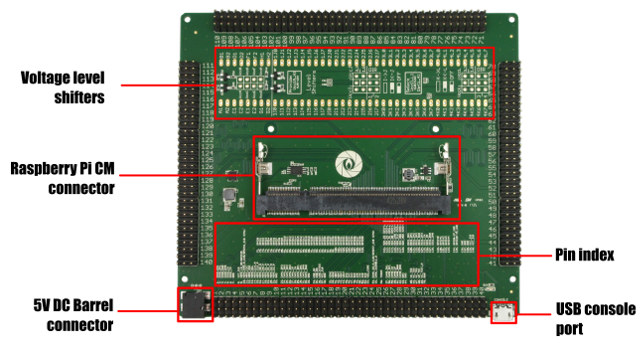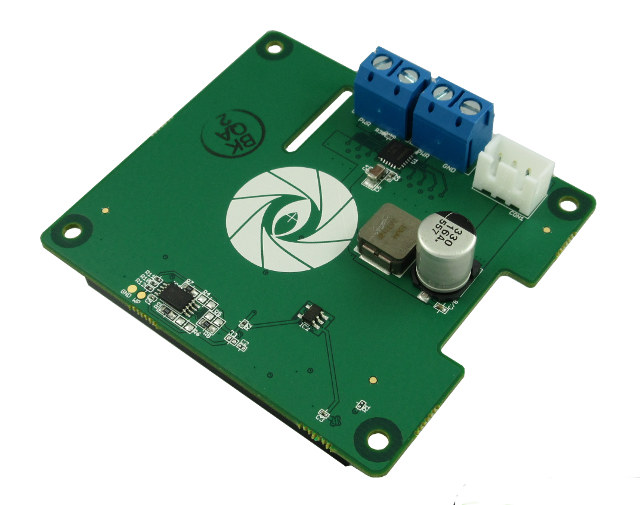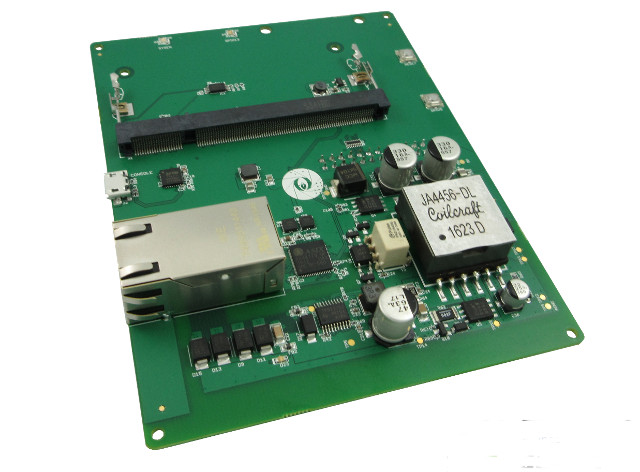Gumstix has recently released of three new expansion boards compatible with Raspberry Pi boards and Compute Modules:
- Gumstix Pi Stepper HAT for 4-wire stepper motors
- Gumstix Pi Newgate breakout boards exposing all I/Os of Raspberry Pi Compute Module and Compute Module 3
- Gumstix Pi Conduit PoE adding PoE support to their LoRa gateway kit based on RisingHF RHF0M301 LoRa concentrator module.
The company also offers a custom Yocto 2.2 (Morty) Linux images with support for their Pi HATs and Compute Module carrier boards.
Gumstix Pi Stepper HAT
The expansion board is designed with the 40-pin header for Raspberry Pi products, and includes Texas Instruments DRV8846, a 4 – 18V, 1.4A stepper motor driver with 1/32 microstepping providing rotational accuracy below a tenth of a degree, and 6,400 distinct positions. The board supports 6 to 36V batteries via a 3-pin headers, includes 256 kbit serial EEPROM, and can be used for printers, scanners, video security cameras, projectors, and other automated equipment.
You’ll find technical documentation and software on the product page, where you can also purchase the board for $35.
Gumstix Pi Newgate

The Gumstix Pi Newgate is a breakout board for RPi Compute Module and Compute Module 3 that exposes all I/Os of their 200-pin SO-DIMM connector via 2.54mm pitch headers with 3 terminals for each pin. The board is also equipped with a micro USB console port, and level shifters to accommodate 3.3 and 1.8 volt logic levels for peripheral devices.
The breakout board goes for $85 on Gumstix website.
Gumstix Pi Conduit PoE
Pi Conduit PoE is an update of their earlier board with added Gigabit Ethernet and PoE support, and removal of cellular support:
- 200-pin SO-DIMM connector for Raspberry Pi Compute Module / Raspberry Pi 3 Compute Module (CM3 / CM3L)
- Headers for RisingRF RHF0M301 LoRa gateway/concentrator module
NimbeLink Skywire 2G/3G/4G cellular modem connector- Gigabit Ethernet jack with PoE support implemented via ASIX AX88179 SuperSpeed USB 3.0 to Gigabit Ethernet Controller
- USB – 1x micro USB port for debugging via an FTDI USB to TTL chip
- Misc – User (GPIO5) and reset buttons
- Power Supply – 5V via power barrel
If you’re using any of the Raspberry Pi modules, you’ll however be limited to the USB 2.0 interface (480 Mbps) for Gigabit Ethernet, but that’s still an improvement of the 10/100M Ethernet often used with the modules.
The board sells for $150, excluding RisinRF and RPi CM(3) modules.
Yocto Linux and Hardware Customization
Gumstix does not rely on Raspbian anymore, as the company provides custom Yocto Linux disk images (Morty) with support for Gumstix Pi HATs, Compute Module carrier boards, relevant drivers, and systemd services. The company also offers a “Smart repository” with a variety of packages for easier installation. For all the three products listed above you’ll find two Yocto images, one with XFCE environment, one headless with access to the command line.
All three boards have also been designed with Geppeto, the company’s web platform for hardware design, and can be customized to your needs and ordered right in your web browser.

Jean-Luc started CNX Software in 2010 as a part-time endeavor, before quitting his job as a software engineering manager, and starting to write daily news, and reviews full time later in 2011.
Support CNX Software! Donate via cryptocurrencies, become a Patron on Patreon, or purchase goods on Amazon or Aliexpress






